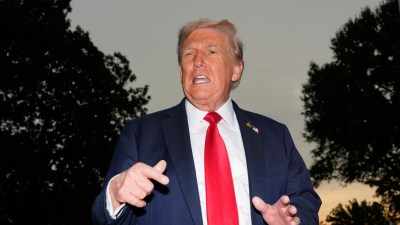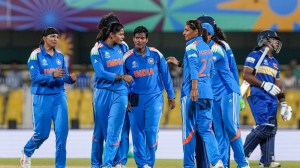Sam and Bharat
IT was pre-Pokhran II. It was the mid-’90s and Indian and US Special Forces were on a rare exercise, getting to know each other. For th...

IT was pre-Pokhran II. It was the mid-’90s and Indian and US Special Forces were on a rare exercise, getting to know each other. For the Indian officers participating, it was a curious experience. Here were burly men, loaded with firepower, sporting state-of-the-art equipment, and walking around with great purpose. But, they refused to drink a glass of local water. The Indian officers smiled politely, ensured that cart-loads of mineral water followed them around, and smirked in private on the state of the hapless Americans.
Years later, post-Pokhran, though much has changed, some things have remained the same. As US special forces acclimatise in Leh, 12,000 ft above sea level, greedily gulping in the air with only 12 per cent oxygen, a new camaraderie has descended. The cartons of mineral water still follow the Americans around, but the understanding between the Americans and their Indian counterparts has improved vastly.
In these desolate mountains, as US Special Forces from Fort Bragg, North Carolina, eye their Indian counterparts from 9 Para (SF) from Udhampur with respect. There are other Indian Special Forces elements too—quietly bunked in with the boys from 9 Para—and each come with their individual skills honed over innumerable operation conducted since 1971 when 9 and 10 Para (commando) first went into Pakistan to conduct raids.
Ever since Strobe Talbott and then external Affairs minister Jaswant Singh met secretly to bring the Indo-US relationship back on track after Pokhran-II, the military relationship has taken a quantum jump. In fact, even by conservative estimates, this is the first time that India is being engaged militarily by a nation and at such length.
All three services have plunged into exercises with gusto—12 exercises for the army, navy and air force—and the Executive Steering Groups set up to discuss further military-to-military cooperation meet regularly to plan further exercises.
And each side is learning a lot. For the Indians this is a major opportunity. “Earlier we would depend on brochures, trying to figure out what we could use and what we really need to make our general policy staff requirements,’’ says a senior officer. ‘‘Now, we can see them operate and we quickly make our notes.’’ In fact, the Indian Marine Commandos learnt several lessons on inserting themselves from the beach from the US Navy SEALS during their joint exercises.
|
|
|
“As US special forces acclimatise in Leh, 12,000 ft above sea level, greedily gulping in the air with only 12 per cent oxygen, a new camaraderie has descended“
|
|
|
All the exercises conducted have been very specific. The accent has been on developing inter-operability to react to emergencies at short notice. Which explains why Indian and US special Forces from the Army and Navy have been exercising together so much. They are also picking up valuable lessons on counter-terrorist operations, as well as special operations — the backbone of future warfare where the military takes on unconventional warfare conducted by terrorists the world over.
Even for the air force, the accent has been on the ‘‘airlift capability’’ — the ability of both forces to transfer men and equipment by air and then para-drop them into the operational area. Be it Exercise Shatrujeet (May’02 at Agra), Geronimo Thrust (September ’02 at Alaska), Cope Thunder (October’02 at Agra), they have all developed the IAF’s ability to operate with huge American C-130 Hercules aircraft and their paratroopers.
The army, exercising with the Americans in Balance Iroquios (May’02 Agra), travelled to Alaska in September 2002 and to Guam in June this year. The Americans reciprocated by sending their Special Forces in April to the Indian army’s Jungle Warfare School this year and now to Leh in September.
For the Navy, exercises have gone forward to joint operations, protecting the Sea Lanes of Communication in the Mallaca Straits. A Pentagon report remarked that the joint naval operations were the ‘‘most promising’’. having conducted 24 missions together since last year, it has been a ‘‘quantum jump’’ since 2000 when the bilateral engagement started.
But would this mean seeing Indian troops in Iraq? Not really, say senior officers from all the three services. Will the budding relationship be affected. ‘‘No, I think the relationship will continue to grow,’’ said a confident defence minister George Fernandes at an earlier briefing. Will it translate into greater equipment purchases. Most definitely. The interaction has seen two cabinet notes for procuring equipment for modernising Indian Special Forces, as well as modernising the Indian infantry. As military planners get ready to plan more war games, two ‘‘natural allies’’ are making all the right moves.



- 01
- 02
- 03
- 04
- 05



























